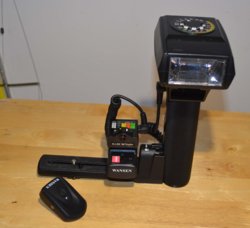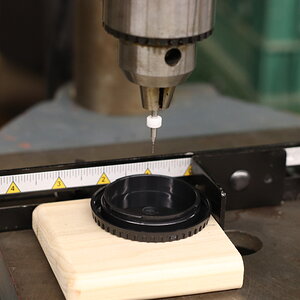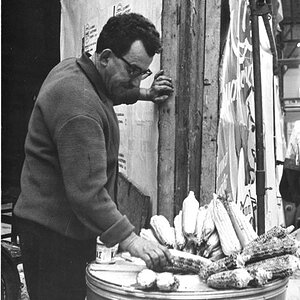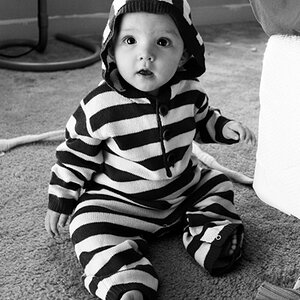Graham Smith 51
TPF Noob!
- Joined
- Apr 11, 2016
- Messages
- 38
- Reaction score
- 8
There are often inquiries about whether or not "old" flash units (suitable for film cameras) can be used on modern DSLRs.
The reason people are generally advised NOT to use them is because they generally have a high trigger voltage that can seriously damage a modern DSLR's circuitry.
Now, according to the literature I have seen, modern Nikon DSLRs can take trigger voltages up to 250V. So if I have an old flashgun that has a trigger voltage of, say, 150V, it should be safe to connect its sensor/trigger/hot shoe fitting/pc cable directly to the camera, right? Well, not as far as I'm concerned.
For all I know, there may be a fault with the flash, or the stated trigger voltage might be a bit above that, so I'm NOT going to chance it! It's not worth it when there is a very cheap and simple way to play it safe.
The setup I have shown here is one I use with an old "Popular 38TG" flash unit. I use this because it has an abundance of power, plus I can connect it to a larger-capacity 6V battery for prolonged shooting. I have connected it indirectly to the camera using a cheap radio trigger that I got from eBay for under 10GBP! There are lots of similar ones, costing no more than £30 or so. With this unit, there is NO ELECTRICAL CONNECTION between camera and flash, so it's perfectly safe. An added advantage of this arrangement is that there's a huge range with the wireless connection, so it's handy for off-camera use too.
So, go ahead and use your old flashguns - if you do it this way, you're not going to damage your expensive camera. Of course, you're going to be doing everything manually - just set a convenient ISO sensitivity, dial that into the flash unit, read off the suggested aperture, set your camera to that aperture and its flash sync shutter speed, and off you go!
It works!



The reason people are generally advised NOT to use them is because they generally have a high trigger voltage that can seriously damage a modern DSLR's circuitry.
Now, according to the literature I have seen, modern Nikon DSLRs can take trigger voltages up to 250V. So if I have an old flashgun that has a trigger voltage of, say, 150V, it should be safe to connect its sensor/trigger/hot shoe fitting/pc cable directly to the camera, right? Well, not as far as I'm concerned.
For all I know, there may be a fault with the flash, or the stated trigger voltage might be a bit above that, so I'm NOT going to chance it! It's not worth it when there is a very cheap and simple way to play it safe.
The setup I have shown here is one I use with an old "Popular 38TG" flash unit. I use this because it has an abundance of power, plus I can connect it to a larger-capacity 6V battery for prolonged shooting. I have connected it indirectly to the camera using a cheap radio trigger that I got from eBay for under 10GBP! There are lots of similar ones, costing no more than £30 or so. With this unit, there is NO ELECTRICAL CONNECTION between camera and flash, so it's perfectly safe. An added advantage of this arrangement is that there's a huge range with the wireless connection, so it's handy for off-camera use too.
So, go ahead and use your old flashguns - if you do it this way, you're not going to damage your expensive camera. Of course, you're going to be doing everything manually - just set a convenient ISO sensitivity, dial that into the flash unit, read off the suggested aperture, set your camera to that aperture and its flash sync shutter speed, and off you go!
It works!











![[No title]](/data/xfmg/thumbnail/37/37119-95714aab9befe33ecb7b951366bedc94.jpg?1619737883)

![[No title]](/data/xfmg/thumbnail/32/32708-c55da623febe9d91efe5f28aa54c3090.jpg?1619735612)



![[No title]](/data/xfmg/thumbnail/41/41762-58f644e561db7433f4f566037a965217.jpg?1619739884)